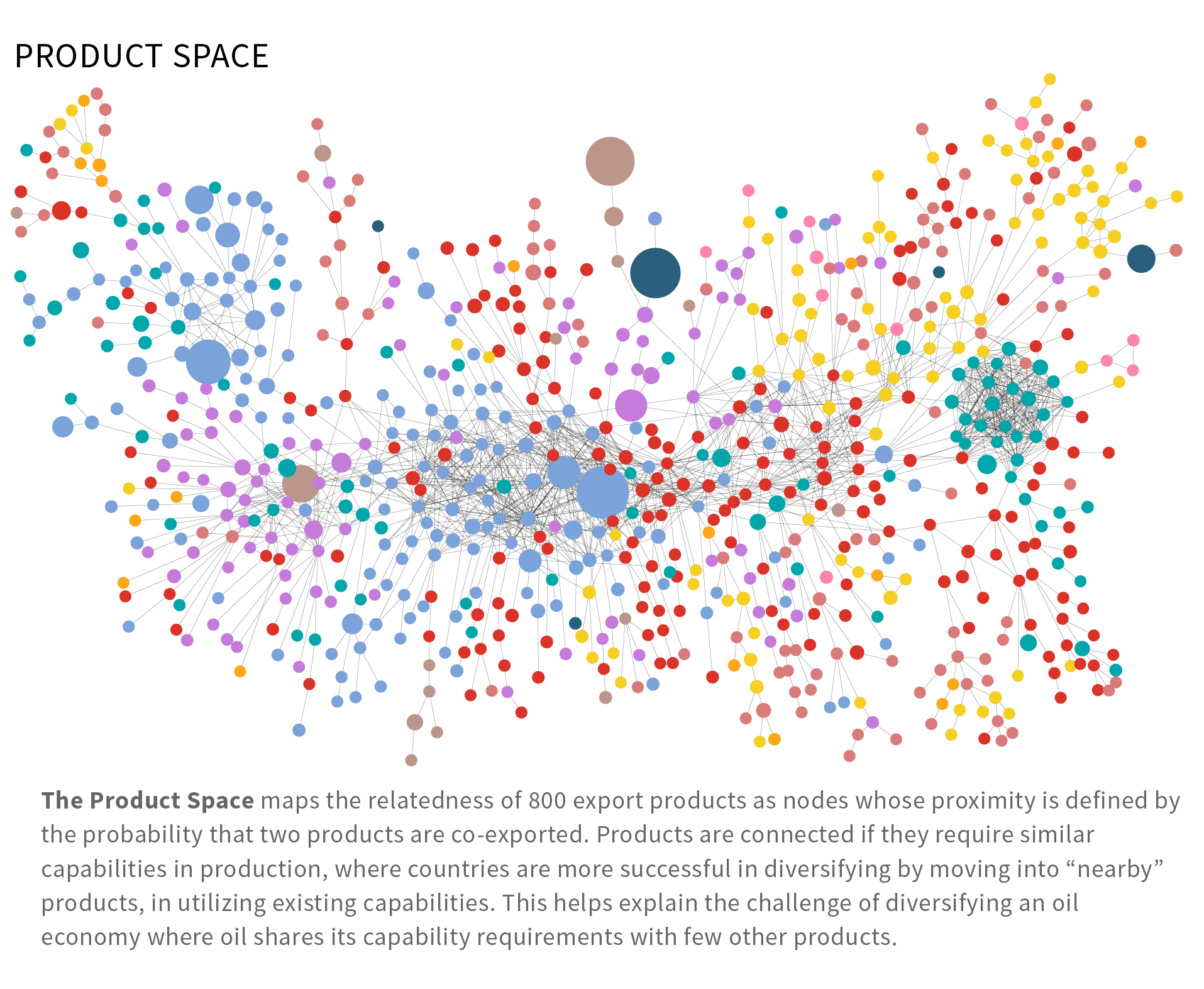Industry Diversification and Job Growth in Saudi Arabia
Project Dates
2016
Supported By
Ministry of Economy and Planning
Saudi Arabia’s economy stands at a crossroads. The current economic model is driven by oil exports, which account for 84 percent of exports and 42 percent of GDP. A historic rise in oil prices starting in 2003 led to a doubling of Saudi Arabia’s GDP and created 1.7 million Saudi jobs in a decade. After the rise, however, came the fall, as by 2016 oil prices stood at 40 percent of their peak. The last time Saudi Arabia experienced a sharp decline in oil prices in 1981, there followed a deep, prolonged recession. Consumption per-capita only recovered to its 1980 level nearly three decades later in the midst of the most recent oil price boom. With 4.5 million young Saudis entering the workforce by 2030 and the continuous evolution of global energy markets, waiting another quarter century for the return of high oil prices is no longer a viable option.
In April 2016, Saudi officials announced Vision 2030, an ambitious plan to diversify the Saudi economy away from its dependence on oil. The scale and speed of reforms called for by Vision 2030 and the accompanying National Transformation Plan (NTP) require careful planning and sequencing of reforms to revamp the country’s economic model toward a diversified, knowledge-driven economy.
In mid-2016, the Growth Lab launched a policy engagement with the Ministry of Economy and Planning to advance research and policy development processes on how to spark economic diversification and job creation in Saudi Arabia. The Growth Lab has advanced global research on the understanding of how growth happens, placing diversification and complexity at the heart of the story. In pioneering a series of methodologies and visualization tools that map paths to diversification, the team applied these tools to better understand the Saudi industrial landscape. By mapping what capabilities exists, these tools can identify new, high-complexity industries that hold promise to create new jobs and income gains, while relying on capabilities that already exist locally. These tools offer a new approach to identify industries to drive growth and job creation, as a fundamental rethink of economic strategy to focus on Saudi Arabia’s most powerful resource: the skills of Saudi workers.

Another line of research aims to identify the constraints to the growth of non-oil sectors. In contrast to traditional approaches of economic strategies built on one-size-fits-all approaches, the team has applied a Growth Diagnostics approach that uses a distinct methodology—a differential diagnosis—to identify the binding constraint to growth in Saudi Arabia. The aim of this research is to identify the changes in labor, fiscal, and regulatory spheres required to enable economic diversification. This research includes macroeconomic modeling of the drivers of growth in the current economic model to understand the effects of necessary fiscal consolidation over medium-term to restore fiscal balance. In moving from a government-led economic model to build a knowledge-based economy driven by the private sector, this research also studies the labor market policies necessary to achieve economic transformation. Building a dynamic knowledge economy requires greater participation of Saudis in the private sector. Policy research has elaborated recommendations to expand the greater participation, voice, and ownership of Saudi women to transform their rising labor force participation into real job and income gains for Saudi households. The research also finds the need for a rethink of the role of foreign workers in a knowledge economy, to best maximize the complementary skill-sets required to attract and retain the knowledge to sustain competitiveness in new productive sectors.
The multi-year engagement looks to build core capabilities within Saudi ministerial units to generate their own modeling and research across a staircase of institutional capabilities to better achieve job creation outcomes. The project looks to train teams to attract new, high-potential industries and to address the key missing public inputs to ensure a functioning business ecosystem for new firms. In this way, the project aims to match a more effective diagnosis and localized identification of diversification opportunities with successful implementation by capable government teams to be able to achieve job creation goals.


